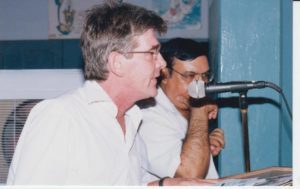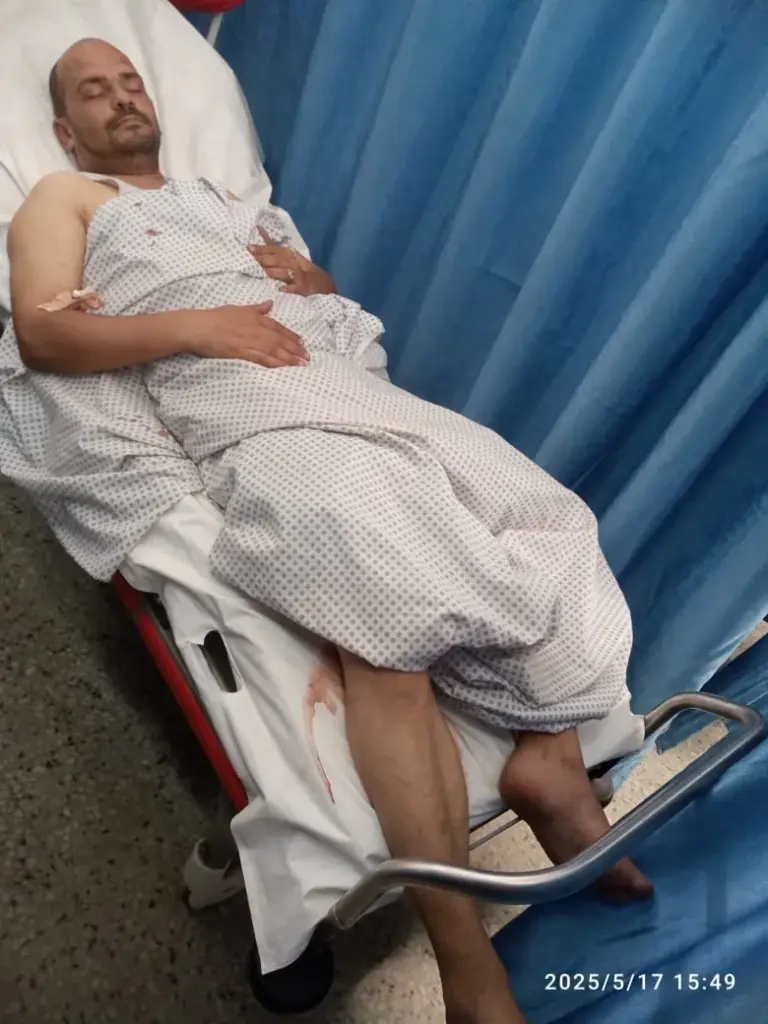Honour killing and acid attacks to the face are widespread in the area, writes renowned British journalist Michael Griffin in an evaluation
I have been asked to write an evaluation of the rural weekly newspaper, Nawa-I-Ahmedpur Sharqia, published in Ahmedpur East, Bahawalpur.
I had the opportunity to visit the newspaper’s premises and spend time with its publisher, Ehsan Sehar, from 15-19 June 2003, when I conducted a journalism-training course on behalf of the Commonwealth Journalists Association (CJA). Mr Sehar coordinated the four-day training session which provided training in basic journalism techniques to separate classes of 15 male and 10 female journalists.
Bahawalpur is a mainly agricultural area to the north of Sind province, in south-central Pakistan. Until quite recently, it was an independent princely state but integration with its giant neighbour has not brought many fruits of development. It remains a profoundly conservative area. Bahawalpur was the scene of a terrorist attack on a church in the post-9/11 period and one of the alleged killers of Daniel Pearl is reported to have hailed from Ahmedpur East.
Illiteracy is rife and Seraiki, the language spoken by 95 percent of Ahmedpur East’s inhabitants, is not represented in the school curriculum. Bonded labour is common in the surrounding large estates and women, who must go covered, have few opportunities for work outside of teaching. Among my women students, the ‘honour killings’ and acid attacks to the face that are widespread in the district were an important issue to write on.
Within this context, Nawa-I-Ahmedpur Sharqia is a rare phenomenon. Founded in 1989, it is the only ABC-certified newspaper in the district to have been published on a regular weekly basis for 15 years. While I do not know its current circulation, the eight-page, four-colour paper clearly plays a significant role in passing on information and creating local identity, but also by acting as a centre for training and advocacy.
From its small office opposite the Adhmedpur East canal, Mr Sehar has organised four training workshops for male and female journalists in the past five years in collaboration with international journalism organisations. The Nawa-I-Ahmedpur Sharqia observes World Press Freedom Day by publishing a special brochure giving information on journalists killed or detained during the previous year, details of which are republished by local, regional and national media. Judging from my own reception, Mr Sehar is also able to mobilise the support of leading figures in the local community, be they Sunni, Shia or Christian.
The status of the rural journalist is an important media issue in Pakistan and the Pakistan Press Foundation has produced a manual specifically addressed to their needs. While the national press predominantly focuses on politics, economy and crime, the realities of life in remoter parts of the country are usually overlooked, either because they are considered unworthy of mention, or are too engrained to change. Papers like Nawa-I-Ahmedpur Sharqia seek to rectify that imbalance by encouraging readers to look at problems in their own communities, whether it be official corruption, inadequate service provision or political collusion. When strong enough, such stories make it to the national press, but only because they have been reported locally first.
Another important part of Mr Sehar’s role in the life of Ahmedpur East is to connect this backwater community with the outside world and be a channel by which organisations dedicated to improving journalism can gain access to young men and women seeking to make their way in the profession. While most journalists I spoke to in Karachi felt that press freedom had largely thrived under the military regime of Parez Musharraf, these improvements have not generally filtered down to the provinces where intimidation of journalists by local political or business figures is quite common. The newspaper’s editor, Ehsan Ahmed Sehar is member of the International Press Institute (IPI), the Committee to Protect Journalists USA and the Commonwealth Journalists Association and is in contact with the World Association of Newspapers in France and the International Centre for Journalists.
Mr Sehar shortly intends to convert Nawa-I-Ahmedpur Sharqia from a weekly to a daily format, both in response to local demands but also due to increased competition arising from the deregulation of radio and television. While there appears to be a market for a daily and the paper remains in profit, the additional costs of running a daily, including the newsprint bill, entail some financial pressure during the early stages of conversion. The loss of newspaper readership to TV and radio has other implications for the town, including the narrowing of the window for news and the loss of a valuable literacy tool.
Michael Griffin
Writer, journalist and broadcaster
184, Haverstock Hill
London NW3 2AL, UK
Email: [email protected]
March 25,2004


